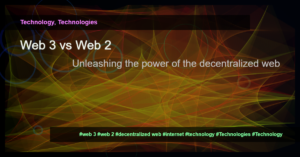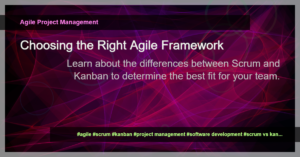Introduction
Agile and Waterfall are two popular project management methodologies used in software development and other industries. Both approaches have their own distinct characteristics and are employed in various contexts based on project requirements and team preferences.
Waterfall Project Management
Waterfall is a sequential and linear methodology in which project tasks are completed in a strict sequence. Each phase of the project must be completed before moving on to the next one. Here is a breakdown of the main stages in Waterfall:
- Requirements gathering and analysis
- Design
- Implementation
- Testing
- Deployment
- Maintenance
Waterfall follows a top-down approach, where each phase is dependent on the completion of the previous one. It is a highly structured and predictable methodology, making it suitable for projects with well-defined requirements and minimal changes expected during the development process.
However, Waterfall can be less flexible when it comes to adapting to changes or incorporating client feedback. Once a phase is completed and signed off, it is challenging to go back and make changes without impacting the entire project timeline and budget.
Agile Project Management
Agile, on the other hand, is an iterative and incremental project management approach. It focuses on flexibility, collaboration, and adaptability to change. Agile utilizes a series of short iterations, or sprints, to complete project tasks. Here are some key aspects of Agile:
- User stories and backlog creation
- Sprint planning and execution
- Daily stand-up meetings
- Continuous testing and integration
- Iterative development and delivery
Agile encourages client involvement throughout the project and welcomes changes and feedback at any stage. It promotes frequent communication, collaboration, and self-organization within the development team. Agile is well-suited for projects with evolving requirements or where client feedback plays a crucial role in shaping the final product.
One of the significant advantages of Agile is the ability to deliver a working product incrementally, providing value to clients early on. It also facilitates the identification and resolution of issues faster, ensuring that the final outcome meets customer expectations.
Which Methodology to Choose?
The choice between Agile and Waterfall depends on various factors, such as project complexity, client involvement, and team dynamics. Here are a few scenarios where each methodology shines:
- Use Waterfall when the project has well-defined requirements, limited changes expected, and a strict timeline and budget.
- Opt for Agile when the project scope is evolving, client involvement is high, and flexibility and adaptability are critical.
- Consider a hybrid approach that combines elements of both methodologies for projects that require a balance between structure and flexibility.
Conclusion
Agile and Waterfall are two contrasting project management methodologies, each with its own strengths and weaknesses. Understanding their differences can help project teams make informed decisions when it comes to selecting the most suitable approach for their projects. Ultimately, the choice between Agile and Waterfall should align with project goals, client expectations, and team capabilities.











